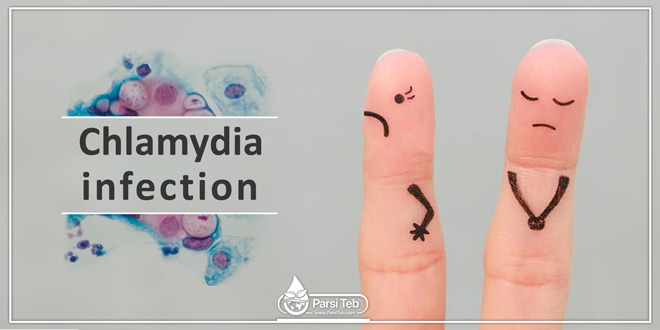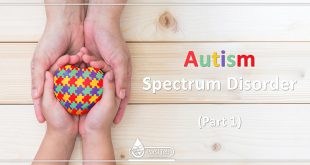What are sexually transmitted diseases (STDs)?
Picture of chlamydiaSexually transmitted diseases (STDs) are infections that can be transferred from one person to another through any type of sexual contact. STDs are sometimes referred to as sexually transmitted infections (STIs) since they involve the transmission of a disease-causing organism from one person to another during sexual activity. It is important to realize that sexual contact includes more than just sexual intercourse (vaginal and anal). Sexual contact includes kissing, oral-genital contact, and the use of sexual “toys,” such as vibrators. STDs probably have been around for thousands of years, but the most dangerous of these conditions, the acquired immunodeficiency syndrome (AIDS), has only been recognized since 1984.
Many STDs are treatable, but effective cures are lacking for others, such as HIV, HPV, and hepatitis B and C. Even gonorrhea, once easily cured, has become resistant to many of the older traditional antibiotics. Many STDs can be present in, and spread by, people who do not have any symptoms of the condition and have not yet been diagnosed with an STD. Therefore, public awareness and education about these infections and the methods of preventing them is important.
There really is no such thing as “safe” sex. The only truly effective way to prevent STDs is abstinence. Sex in the context of a monogamous relationship wherein neither party is infected with a STD also is considered “safe.” Most people think that kissing is a safe activity. Unfortunately, syphilis, herpes, and other infections can be contracted through this relatively simple and apparently harmless act. All other forms of sexual contact carry some risk. Condoms are commonly thought to protect against STDs. Condoms are useful in decreasing the spread of certain infections, such as chlamydia and gonorrhea; however, they do not fully protect against other infections such as genital herpes, genital warts, syphilis, and AIDS. Prevention of the spread of STDs is dependent upon the counseling of at-risk individuals and the early diagnosis and treatment of infections.
What is chlamydia?
Chlamydia (Chlamydia trachomatis) is a bacterium that causes an infection that is very similar to gonorrhea in the way that it is spread and the symptoms it produces. It is common and affects approximately 4 million women annually. Like gonorrhea, the chlamydia bacterium is found in the cervix and urethra and can live in the throat or rectum. Both infected men and infected women frequently lack symptoms of chlamydia infection. Thus, these individuals can unknowingly spread the infection to others. Another strain (type) of Chlamydia trachomatis, which can be distinguished in specialized laboratories, causes the STD known as lymphogranuloma venereum.
What are the symptoms of chlamydia?
The majority of women with chlamydia do not have symptoms. Cervicitis (infection of the uterine cervix) is the most common manifestation of the infection. While about half of women with chlamydial cervicitis have no symptoms, others may experience vaginal discharge or abdominal pain. Infection of the urethra is often associated with chlamydial infection of the cervix. Women with infection of the urethra (urethritis) have the typical symptoms of a urinary tract infection, including pain upon urination and the frequent and urgent need to urinate.
Chlamydia is very destructive to the Fallopian tubes. It can also cause severe pelvic infection. If untreated, about 30% of women with chlamydia will develop pelvic inflammatory disease. Symptoms of pelvic infection include fever, pelvic cramping, abdominal pain, or pain with intercourse. Pelvic infection can lead to difficulty in becoming pregnant or even sterility. Occasionally, if the infection is severe enough, a localized area of infection and pus (an abscess) forms, and major surgery may be necessary and even lifesaving.
Because it is common for infected women to have no symptoms, chlamydial infection is often untreated and results in extensive destruction of the Fallopian tubes, fertility problems and tubal pregnancy.
Chlamydial infection, like gonorrhea, is associated with an increased incidence of premature births. In addition, the infant can acquire the infection during passage through the infected birth canal, leading to serious eye damage or pneumonia. For this reason, all newborns are treated with eye drops containing an antibiotic that kills chlamydia. Treatment of all newborns is routine because of the large number of infected women without symptoms and the dire consequences of chlamydial eye infection to the newborn.
How is chlamydia diagnosed?
Chlamydia can be detected on material collected by swabbing the cervix during a traditional examination using a speculum, but noninvasive screening tests done on urine or on self-collected vaginal swabs are less expensive and sometimes more acceptable to patients. While culturing of the organism can confirm the diagnosis, this method is limited to research laboratories and forensic investigations. For routine diagnostic use, newer and inexpensive diagnostic tests that depend upon identification and amplification of the genetic material of the organism have replaced the older, time-consuming culture methods.
What is the treatment for chlamydia?
Treatment of chlamydia involves antibiotics. A convenient single-dose therapy for chlamydia is 1 gm of azithromycin (Zithromax, Zmax) by mouth. Alternative treatments are often used, however, because of the high cost of this medication. The most common alternative treatment is a 100 mg oral dose of doxycycline (Vibramycin, Oracea, Adoxa, Atridox and others) twice per day for seven days. Unlike gonorrhea, there has been little, if any, resistance of chlamydia to currently used antibiotics. There are many other antibiotics that also have been effective against chlamydia. As with gonorrhea, a condom or other protective barrier prevents the spread of the infection.
Chlamydia At A Glance
* There is no “safe” sex.
* Condoms do not necessarily prevent STDs.
* Gonorrhea and chlamydia are bacterial STDs that are frequently found together.
* Chlamydia infection is treated with antibiotics.
* Chlamydia infection can lead to extensive destruction of the fallopian tubes and fertility problems.
I had no symptoms and no idea of how long I had chlamydia until I was pregnant and started going to an OBGYN. This was after six years of being with my first and only sexual partner, now ex-husband. Girls please go for regular screenings, it’s smarter and safer to check your own health regularly.
Comment from:
When I had Chlamydia, I’m still not sure how long I had it, but I was realizing that I was discharging and it had a weird stench to it so that’s when I got checked and found out that, that’s one of the symptoms, but that could also be a symptom for a Vaginal Bacterial Disease which is also curable. Good Luck.
Comment from: nycgal, 19-24 Female (Patient) Published: November 16
There was a time when I didn’t have my period for about three months, pain in my lower abs, pressure feel like in my vagina. My now ex-bf who I was with over a year and a half, told me he was bisexual. At first I didn’t think anything of it, until I went to the emergency room, and the OBGYM took several tests. A few weeks later she called. I went in and that’s when I was told I had Chlamydia. It sucks, yes and hurt like hell because I felt like I was dirty, that I should have been more careful. It took me such a long time to trust my current partner to even go down that road.
Comment from:
I experienced abnormal bleeding during sex with a casual partner. I went to the doctor 2 days later and she said that many things could cause this but took a vaginal swab for a Chlamydia test. She said while taking the swab that I had a yeast infection on my cervix and that it was most likely the reason for the bleeding however the Chlamydia test came back positive so she put me on a treatment. By then I was also having some lower-abdominal discomfort…
Comment from:
My chlyamdia symptoms include severe lower middle back pain, itching around inner and outer labia and clitoris, foul smelling urine and a terrible headache.
Comment from:
I really don’t know when I got Chlamydia I’m only 14 years old I have bad cramps and, when I found out that I was positive for Chlamydia I felt like I wanted to kill myself. I would have never thought in a million years that I would test positive for a STD Since I’ve found out I have only been to the doctor once. I’ve been given some type of pill I’m not sure if the Chlamydia is gone but I hope so. I’m just ready to get back to my regular life. Ladies be careful who you lay down and have sex with trust no one but yourself.
Comment from: nessa, 19-24 Female (Caregiver) Published: October 07
Well I contracted the disease earlier this year about in February and from then I have been having abdominal pain. The doctor also ruled out that I had cervical cysts and from them every month I have to be at the doctor getting insertion tablets for yeast and it’s just not going away and seriously I am about fed up cause no doctor can find a solution to this and let me go on with my normal life.
 Parsi Teb Physical and Mental Health Journal
Parsi Teb Physical and Mental Health Journal 



